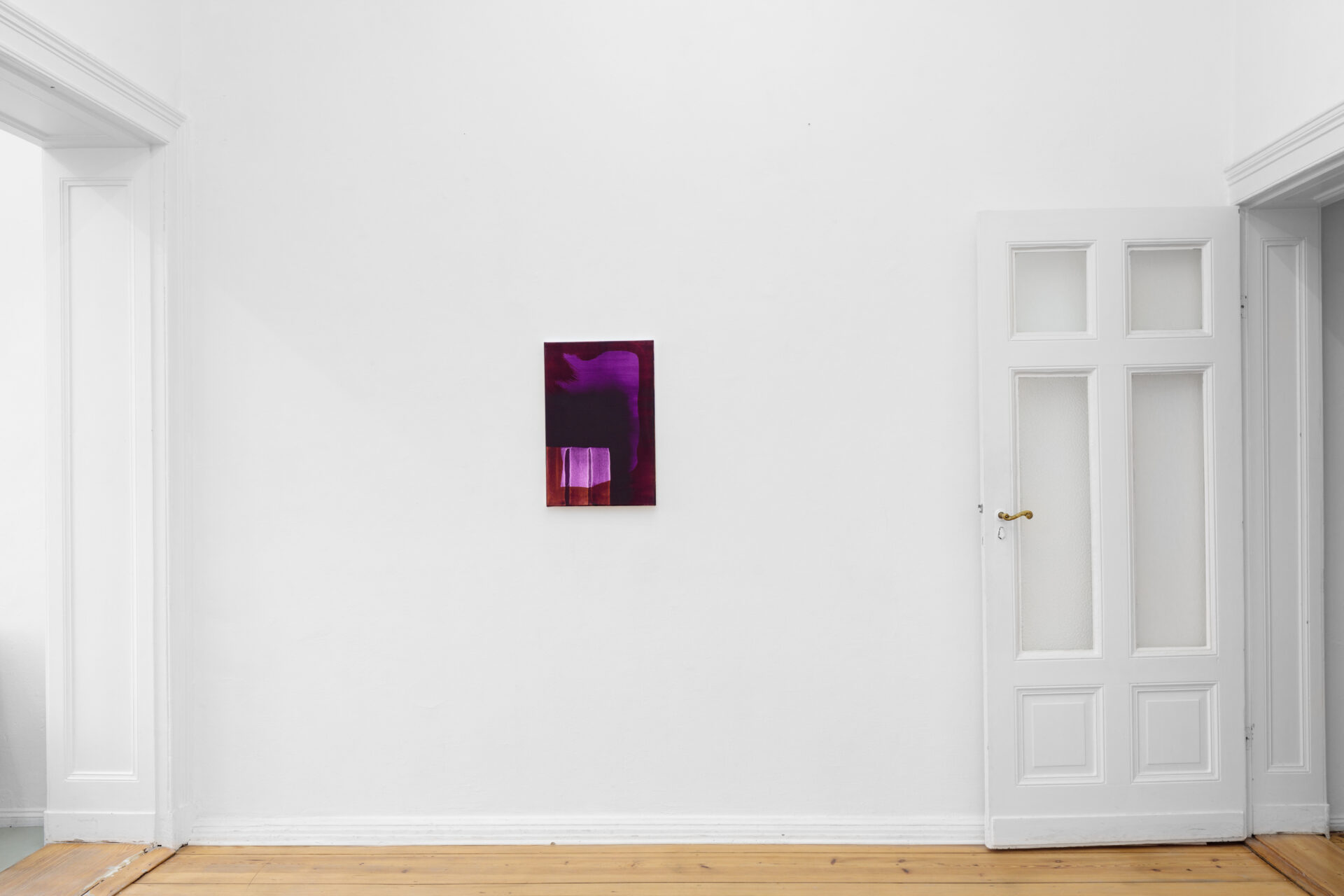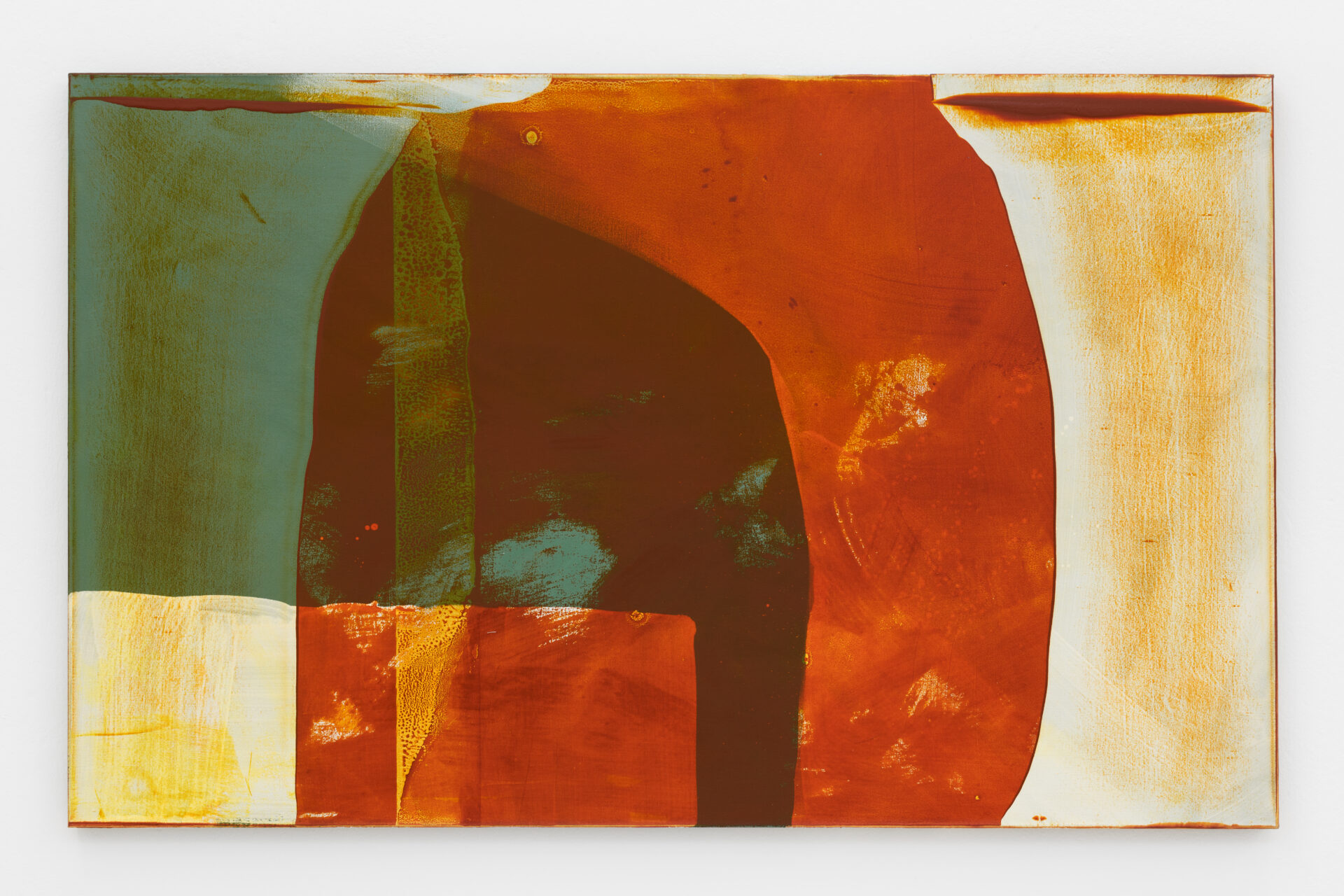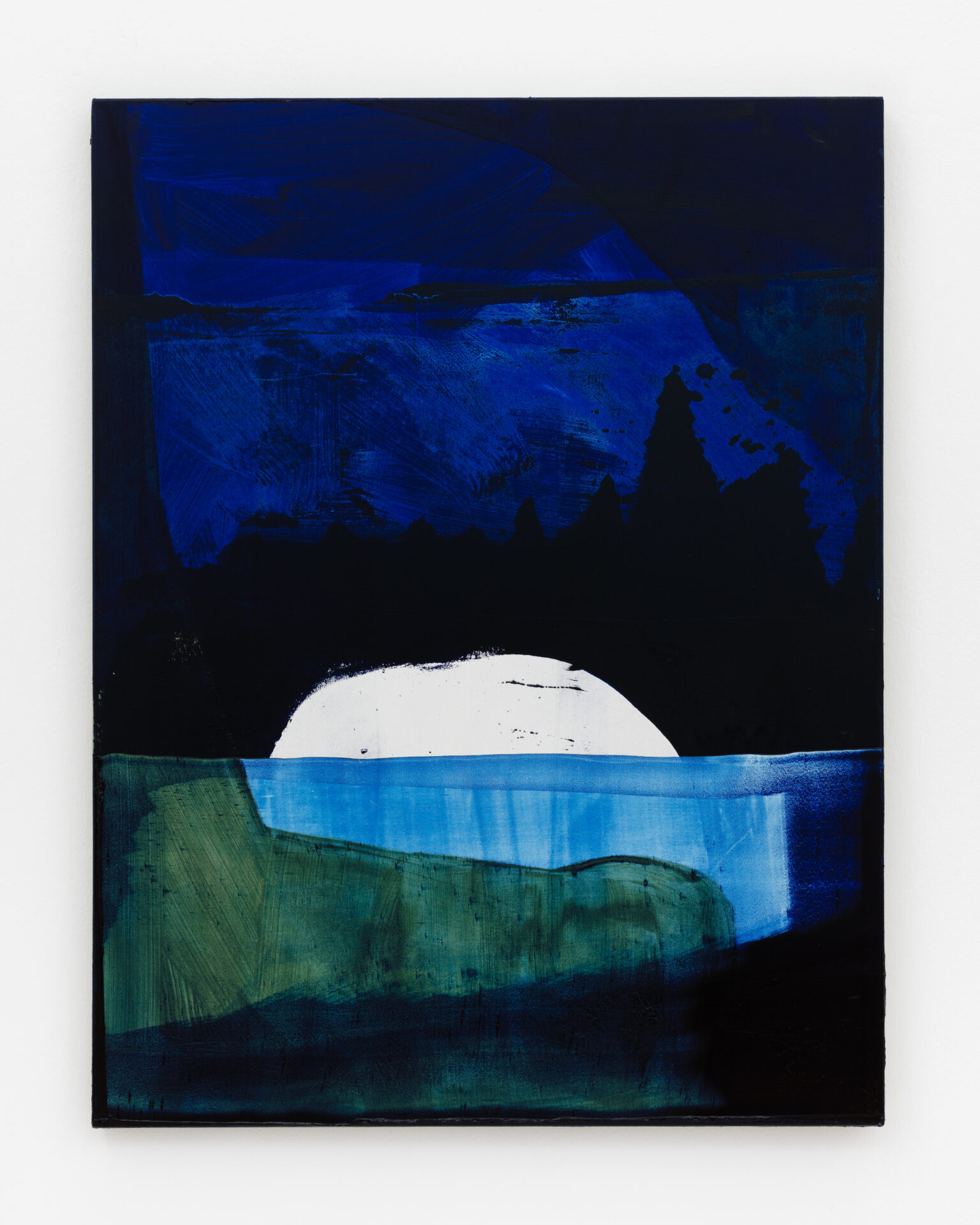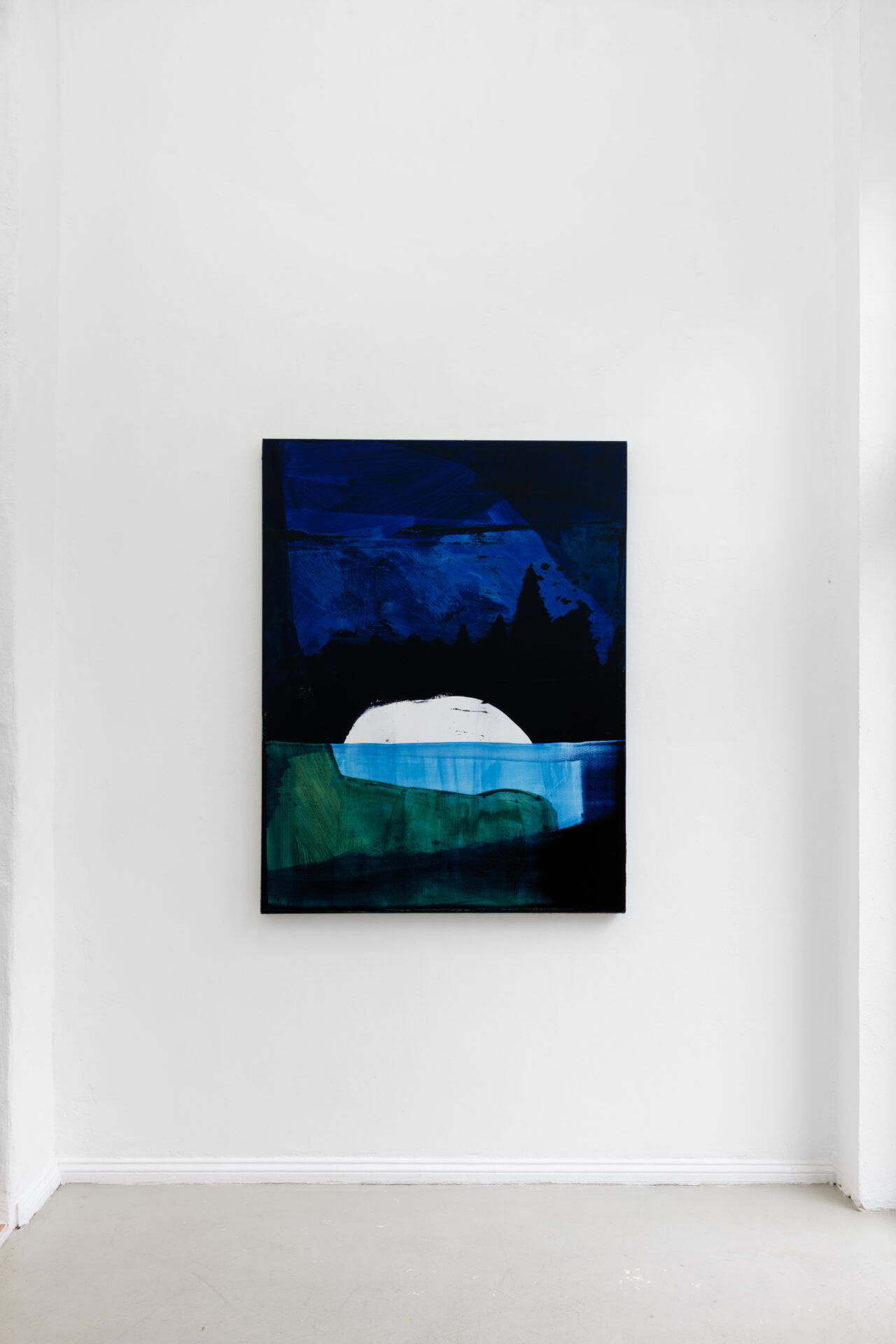Claudia Mann & Daniel Lergon
15.02. – 16.04.2022
Claudia Mann: Ground doesn’t exist & Daniel Lergon: Lichtung
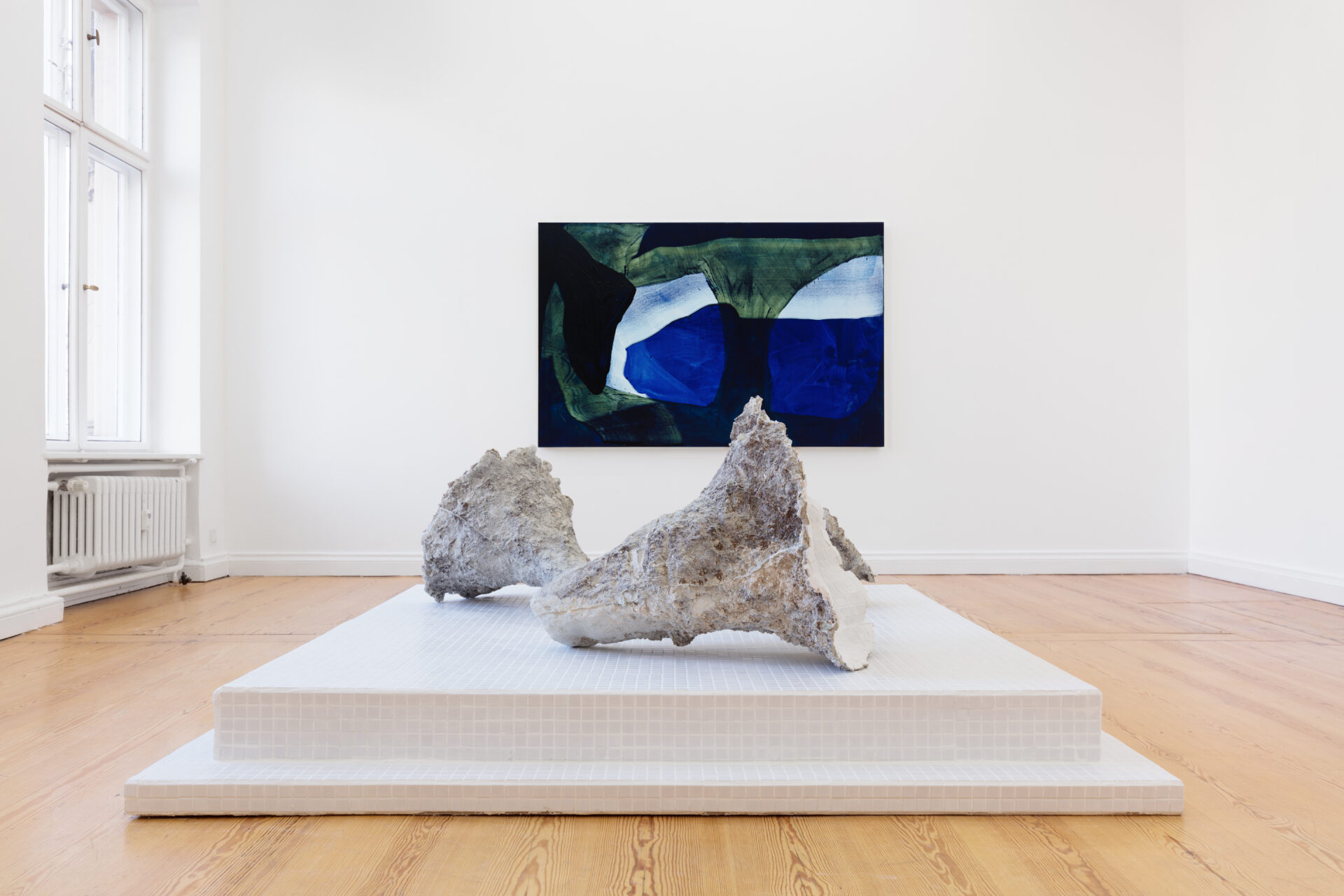
& Daniel Lergon | Lichtung, 2022
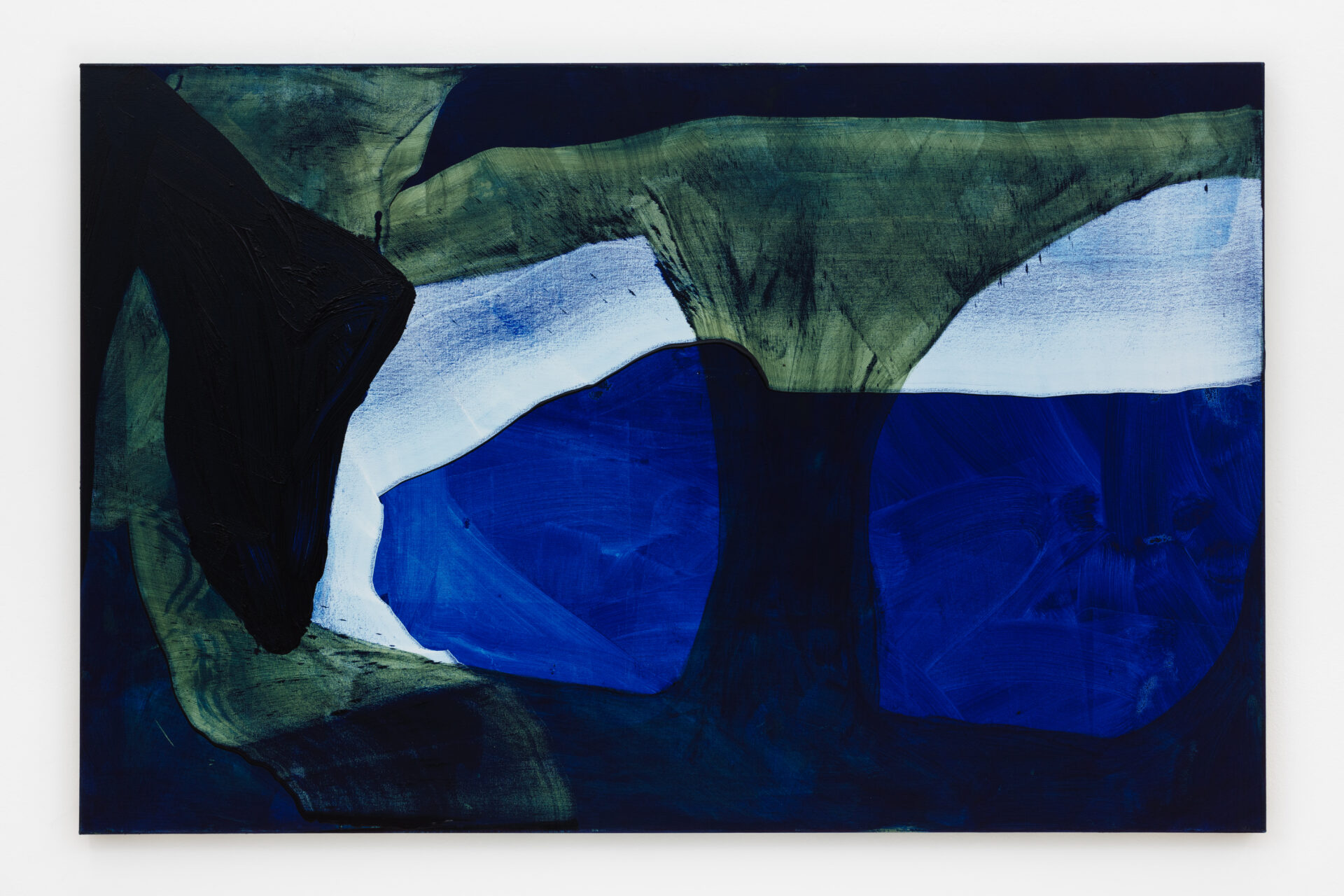
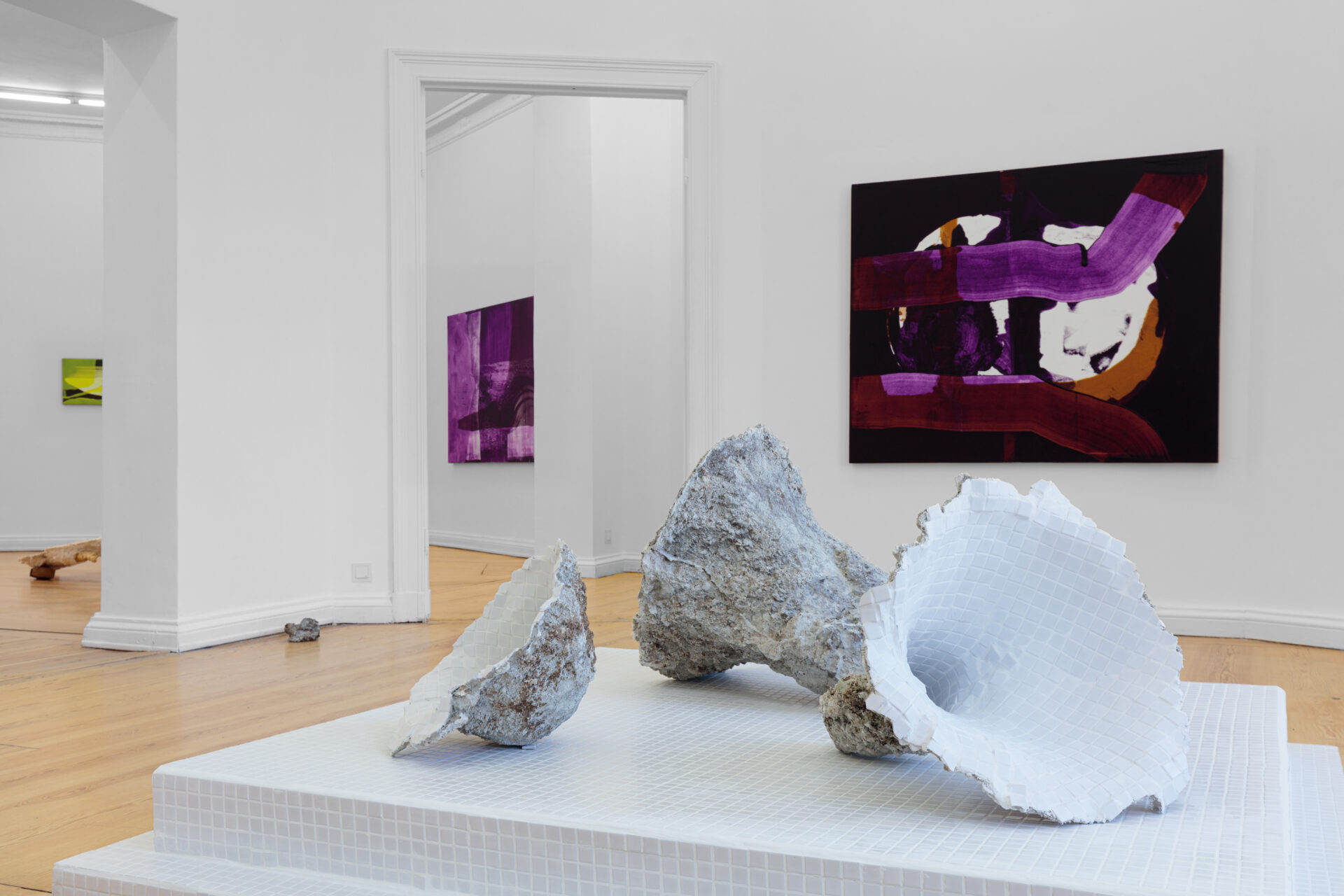
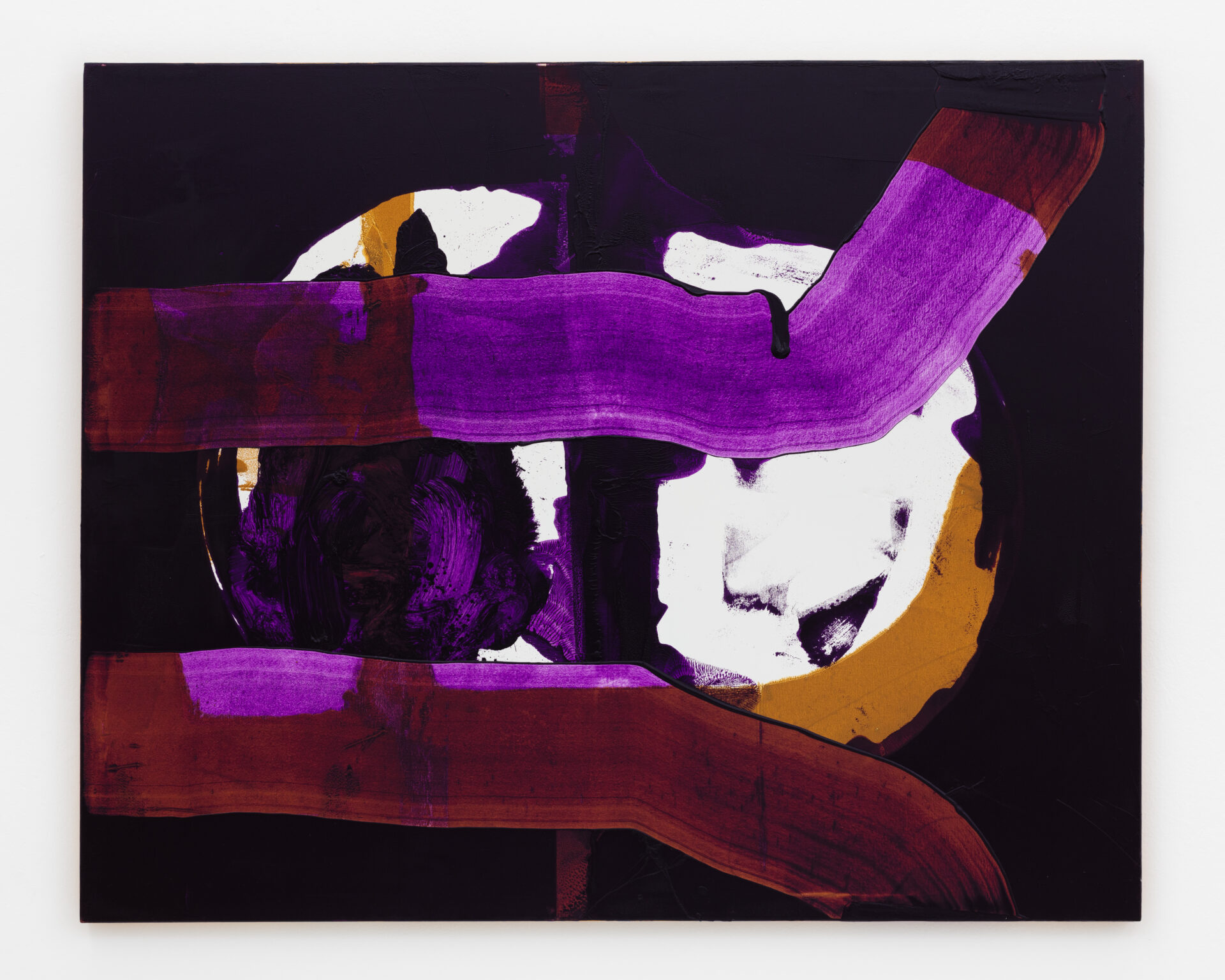
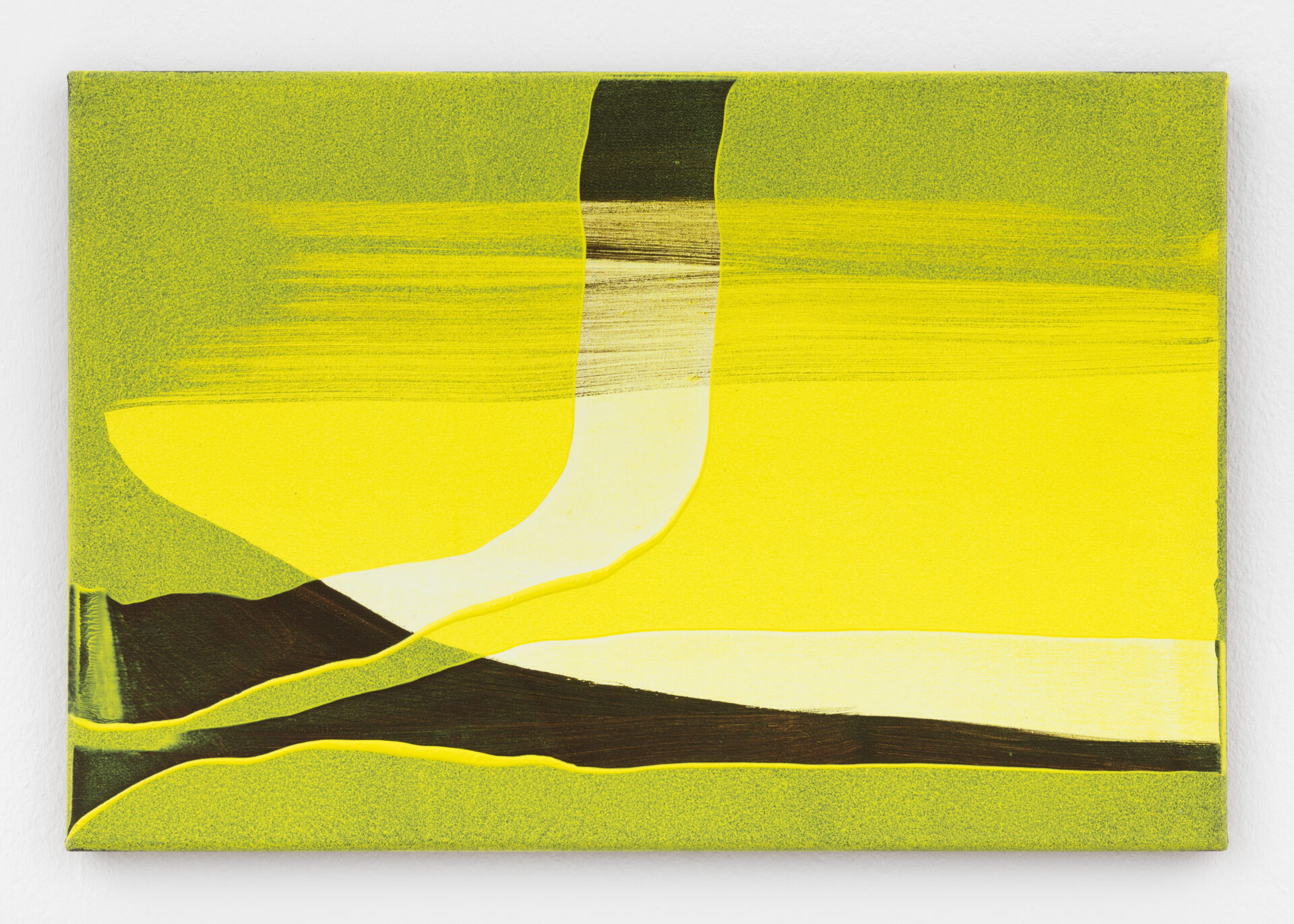
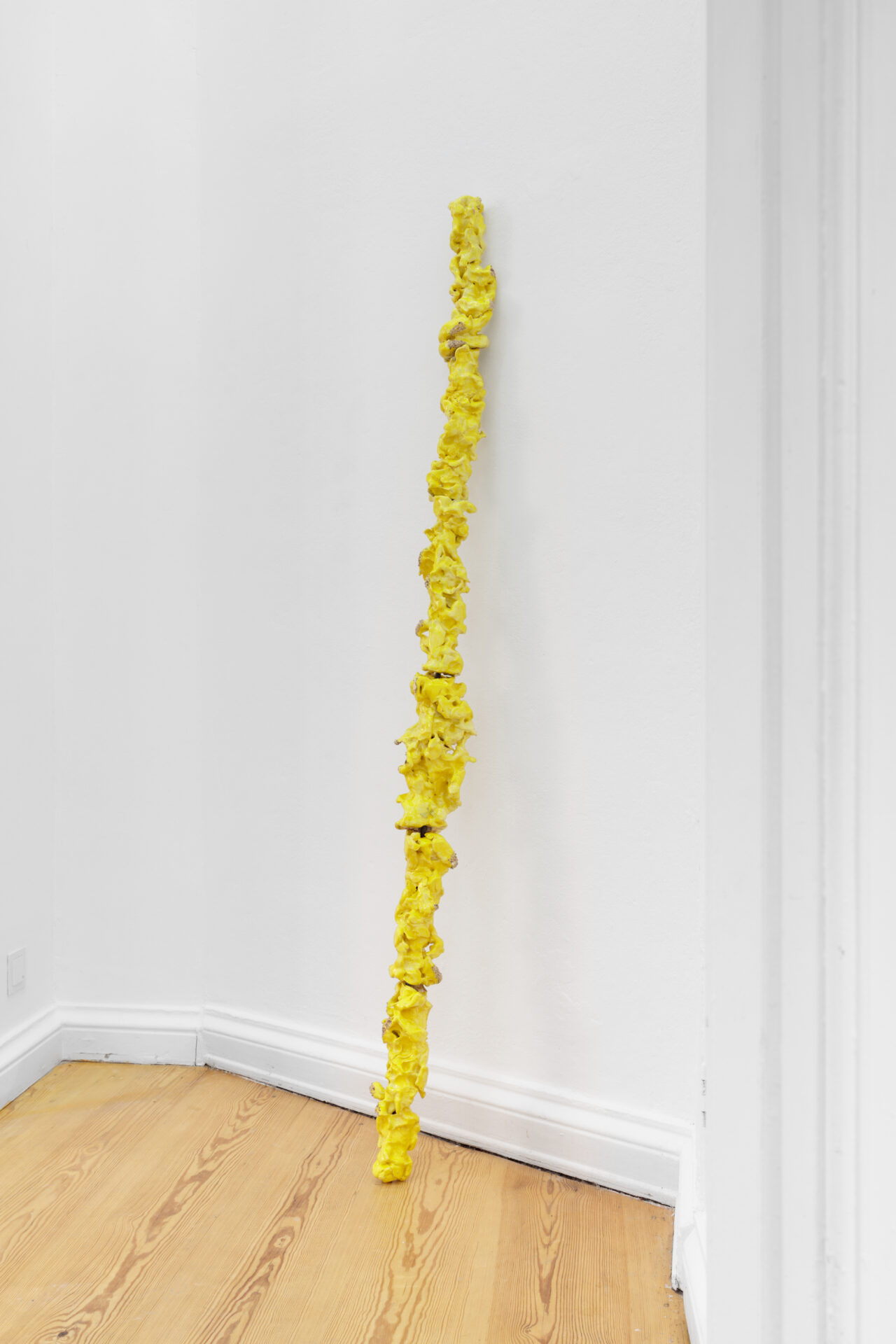
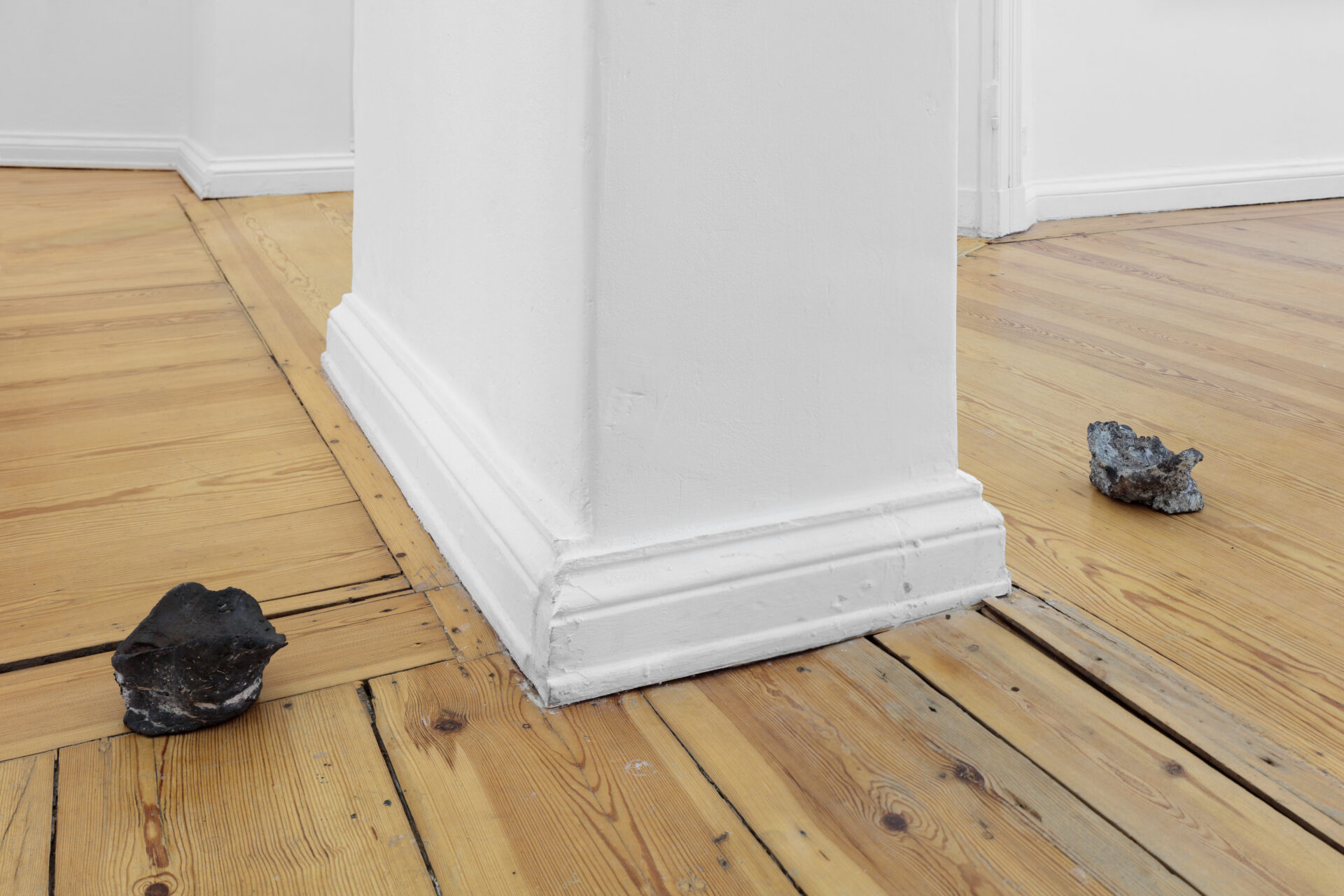
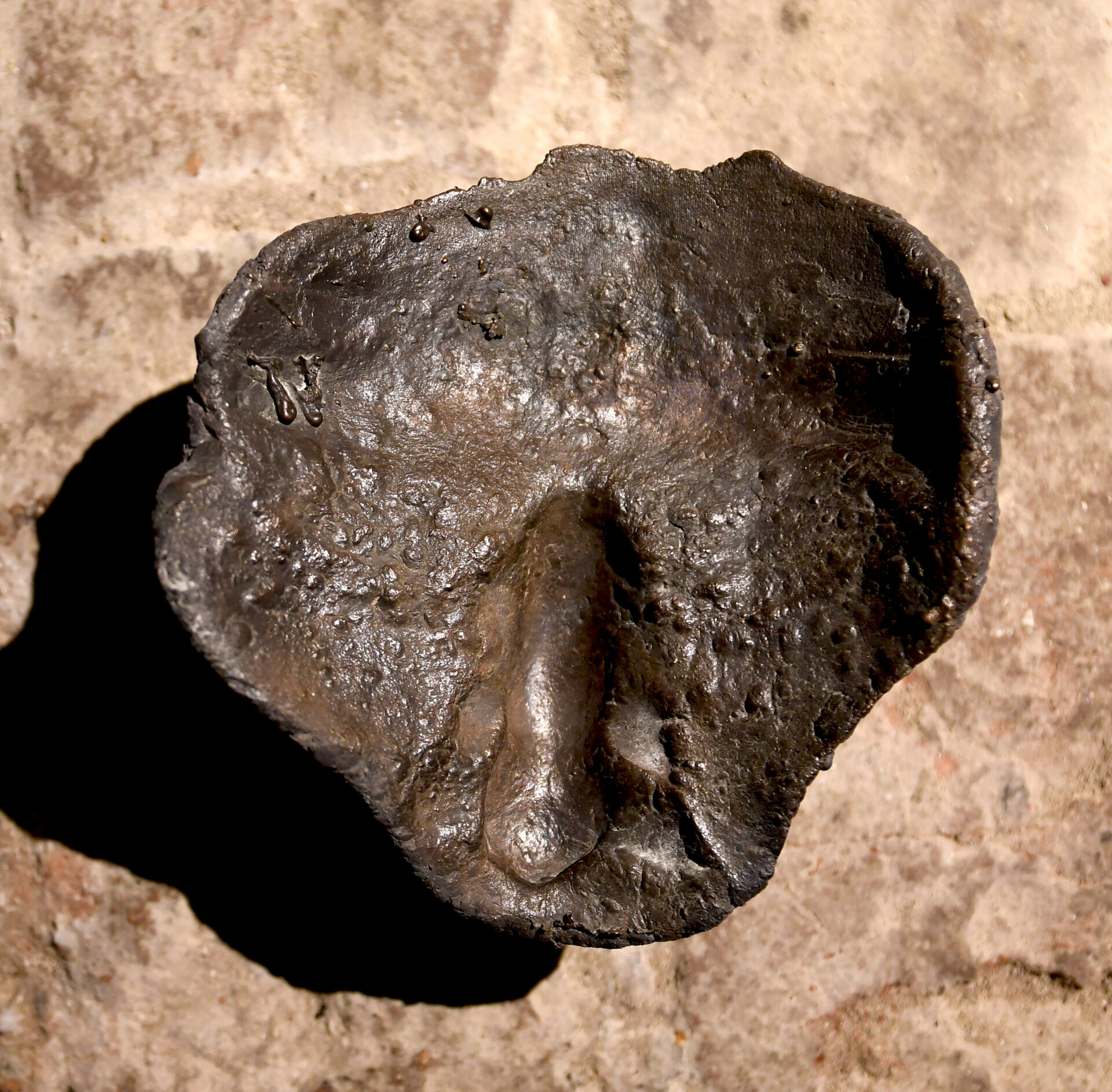
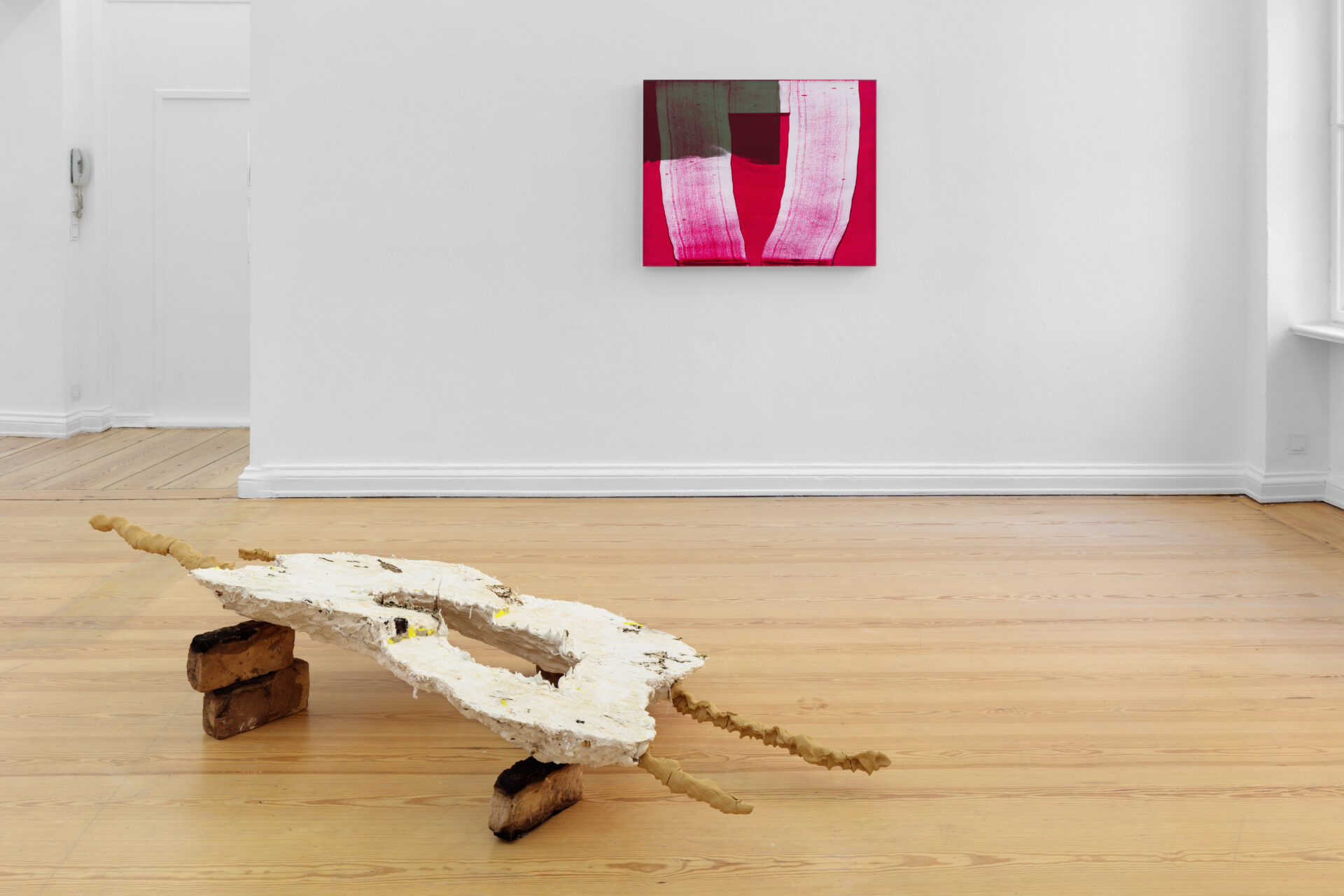
& Daniel Lergon | Lichtung, 2022
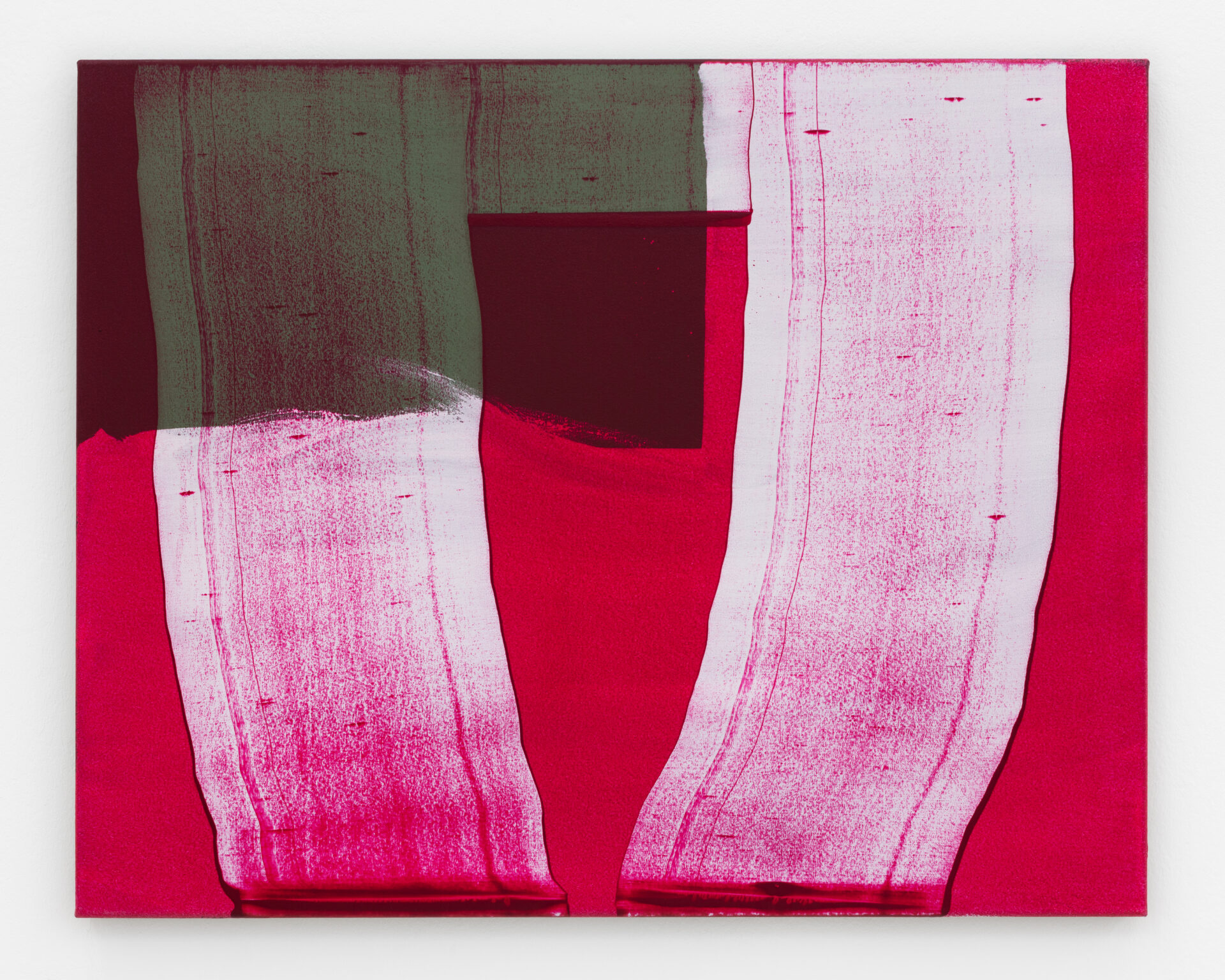
Quinacridrone Violet in oil on green earth on canvas, 80 x 100 cm
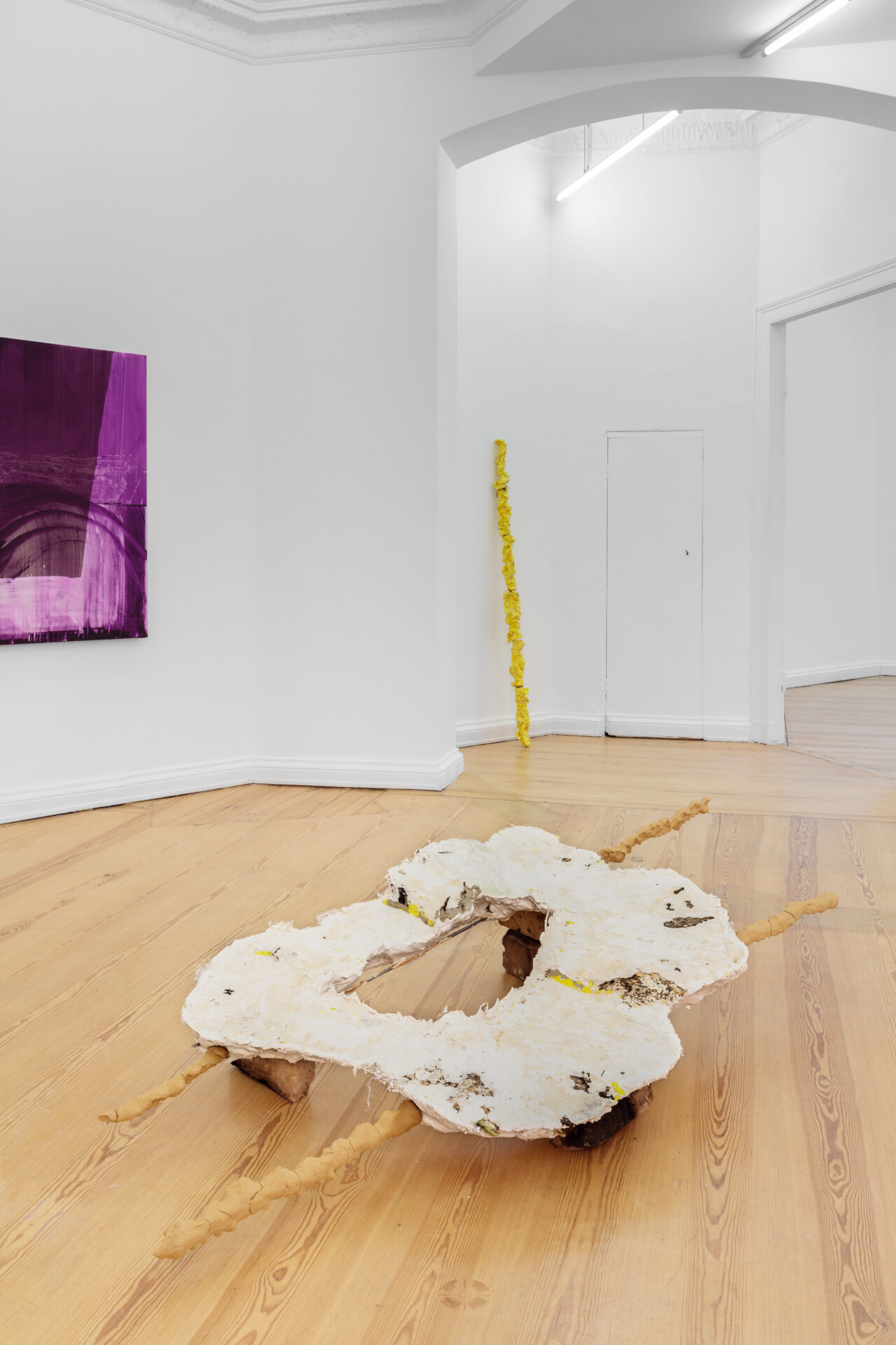
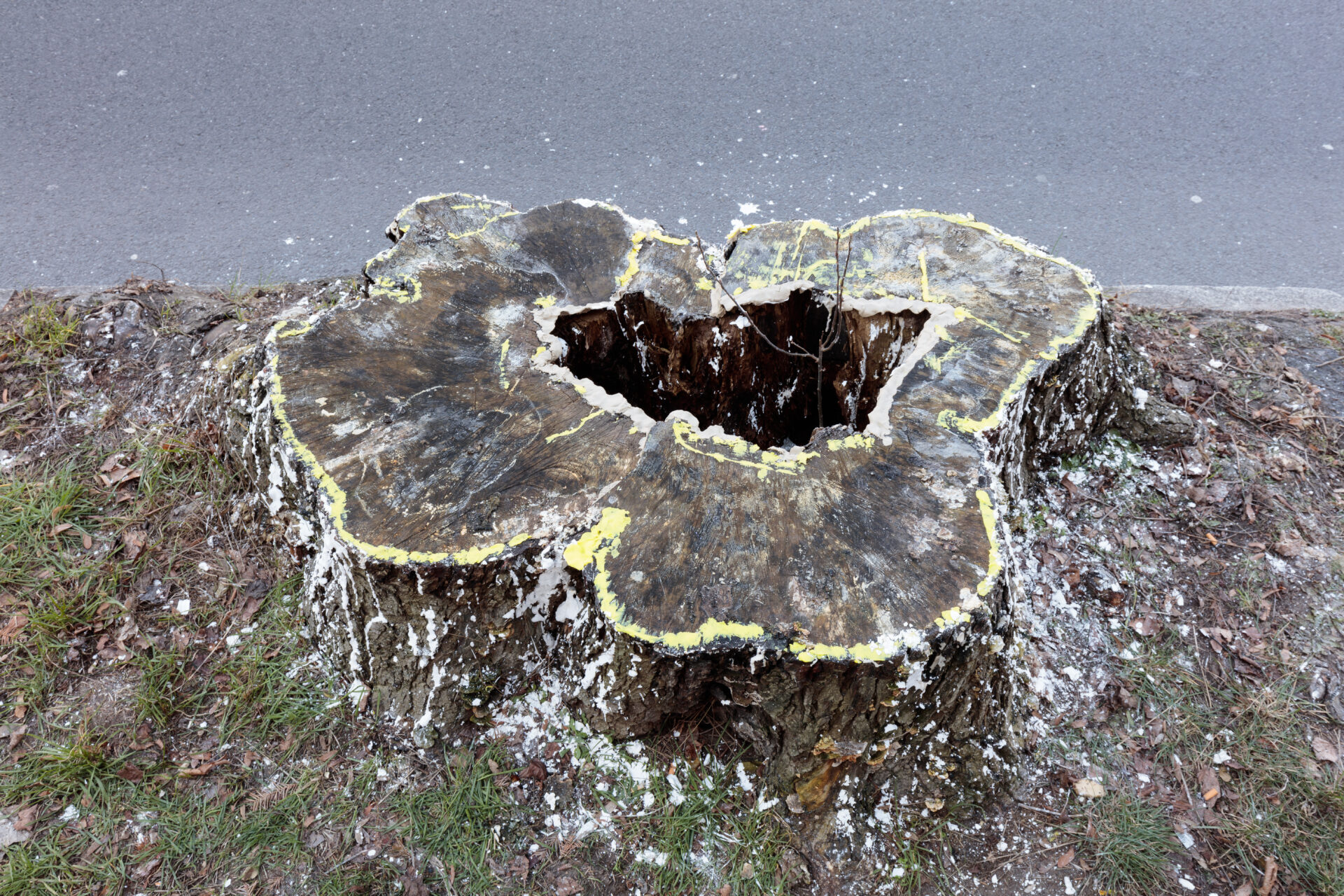
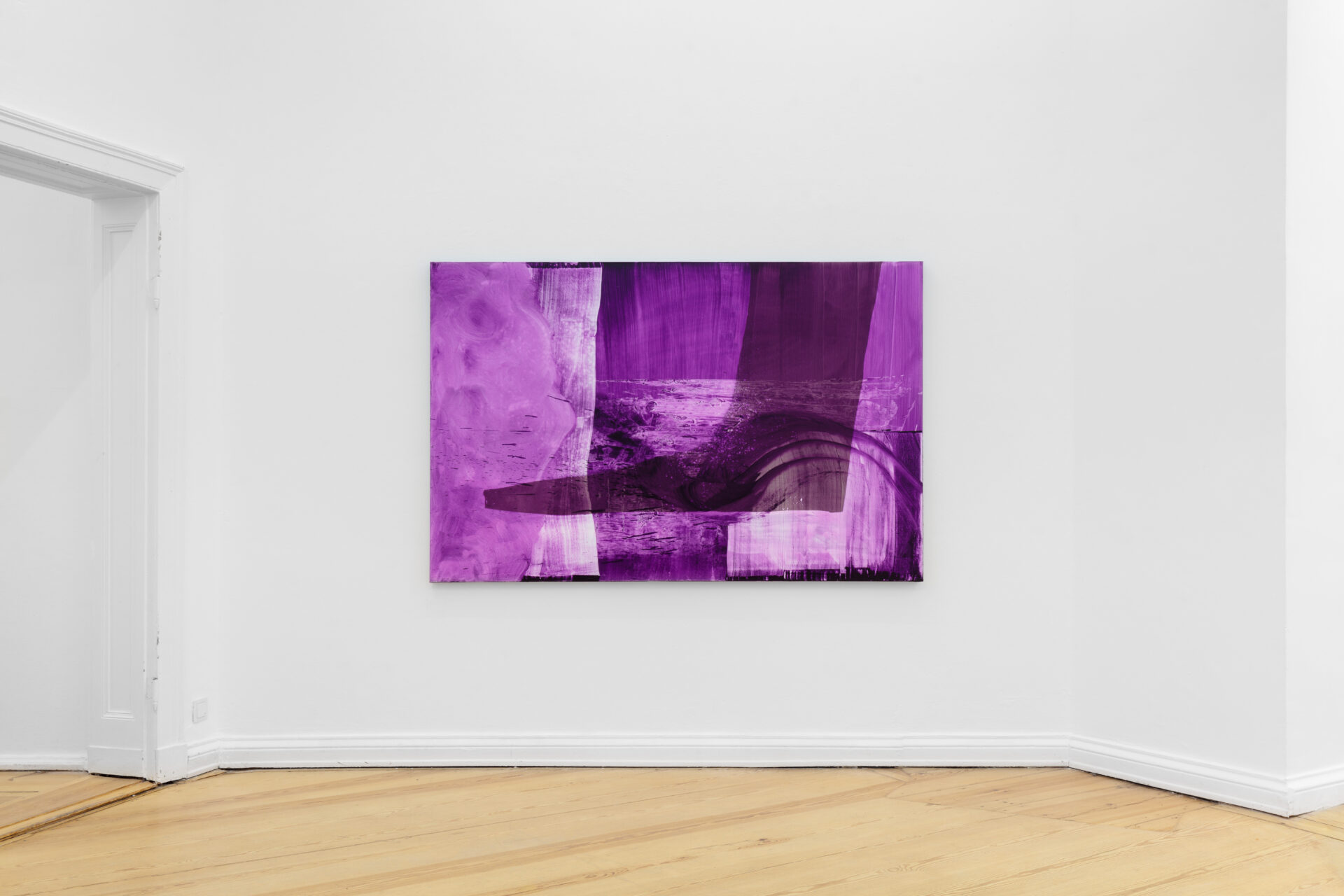
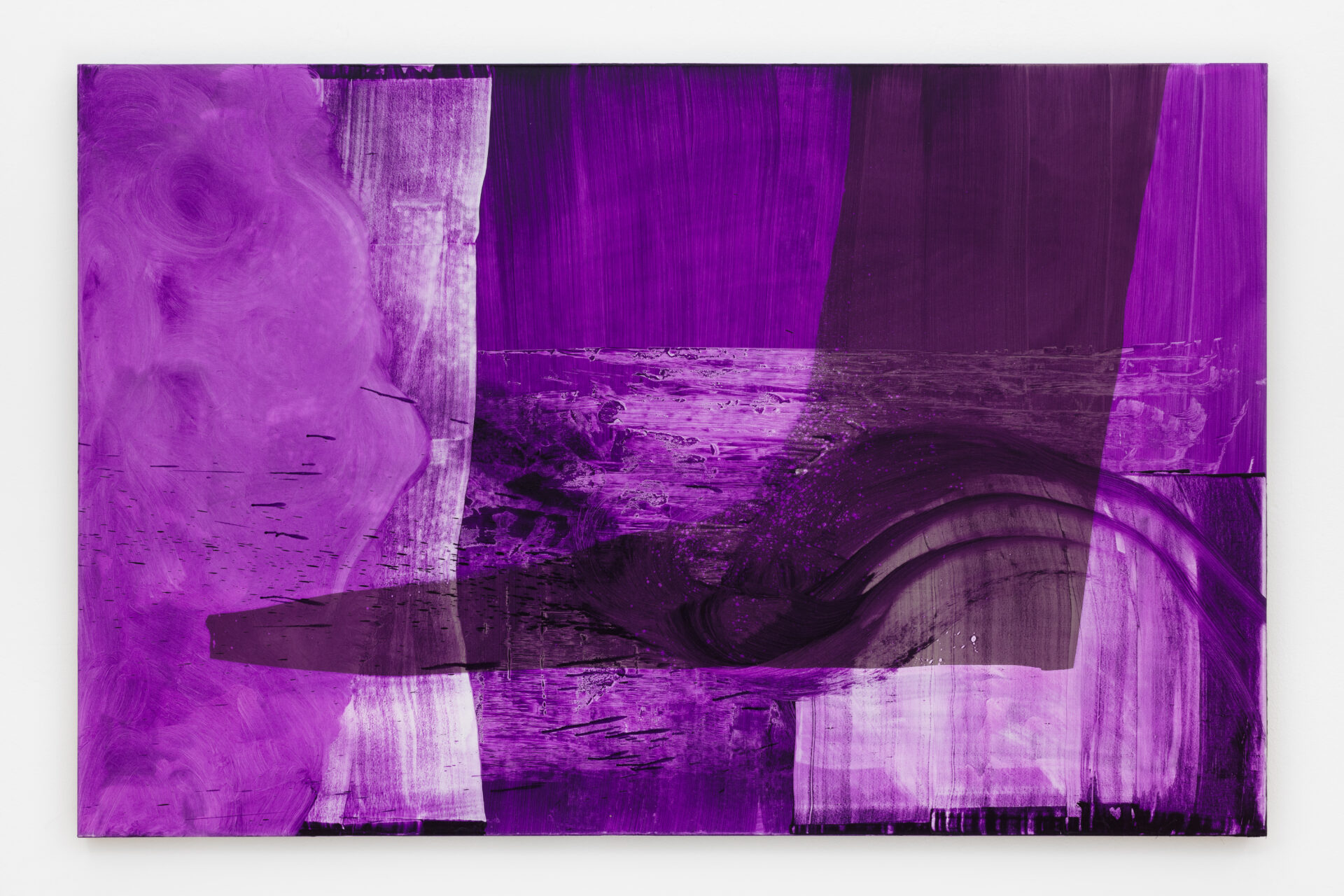
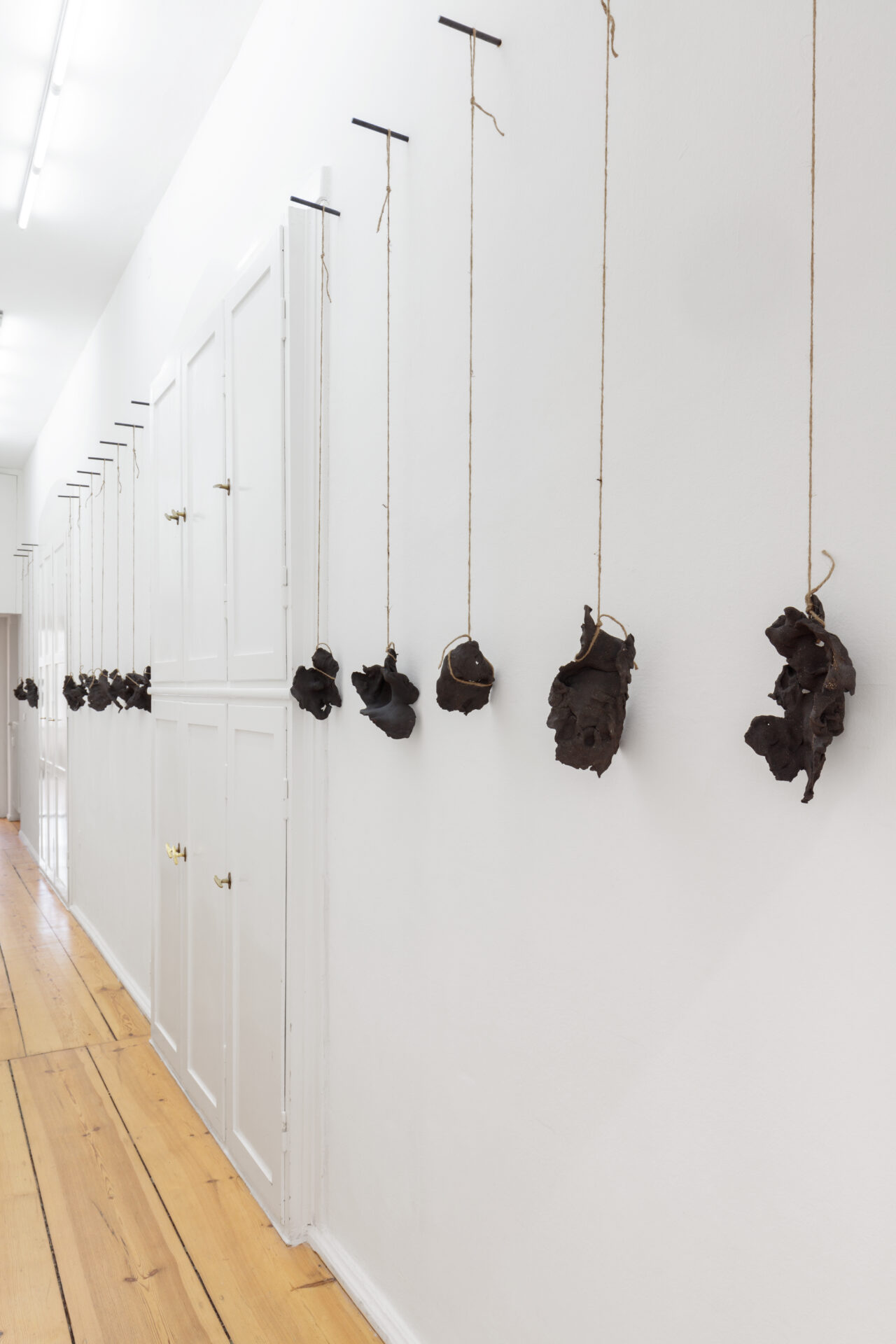
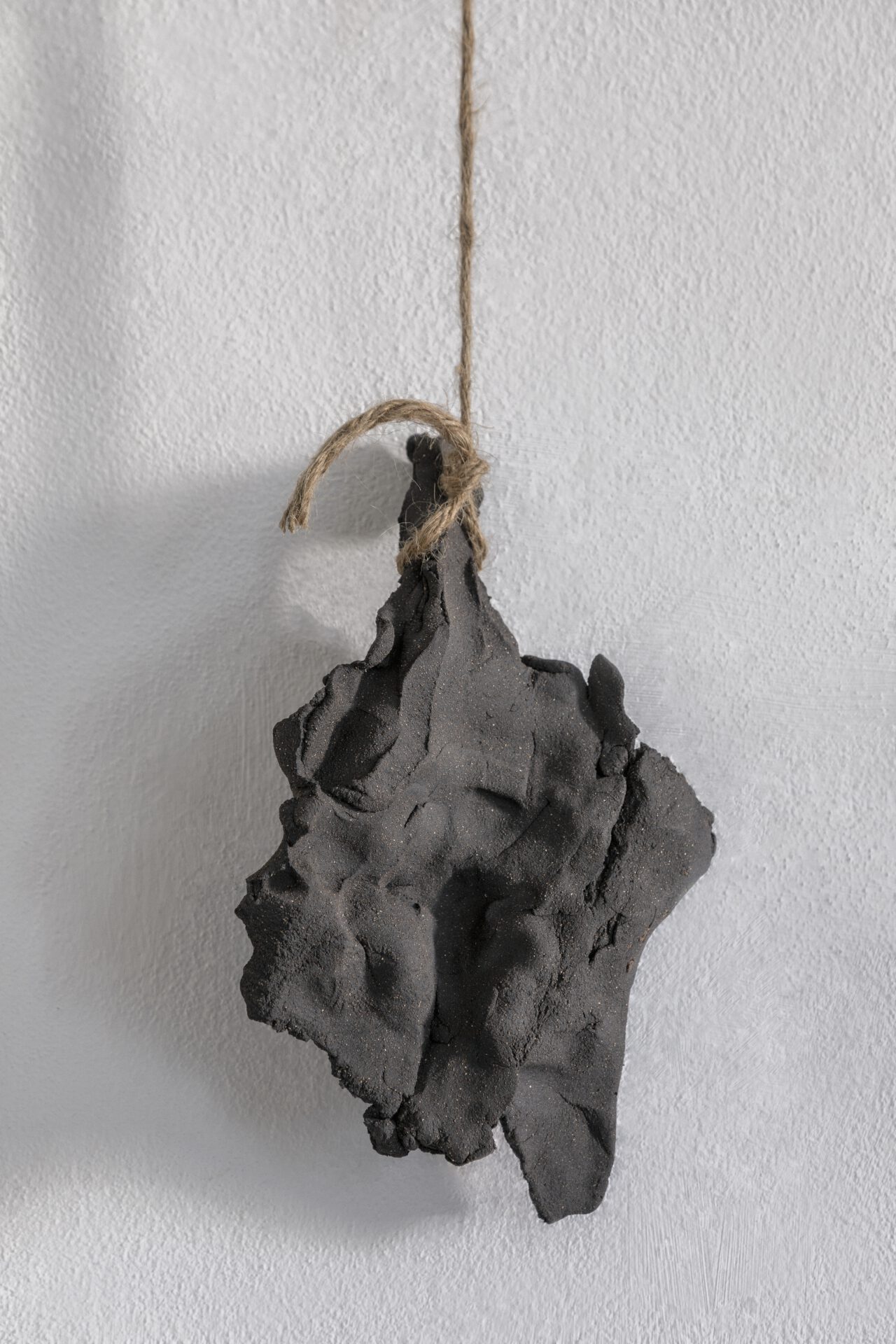
PSM is pleased to be able to present the second solo exhibition entitled Lichtung by Daniel Lergon (*1978) and simultaneously the first solo exhibition entitled Ground doesn’t exist by Claudia Mann (*1982)
Daniel Lergon | Lichtung
In the middle of the dark forest, only the clearing reveals its colors.
Daniel Lergon’s occupation with the interaction of light and surface and the resulting possibilities and methods of painterly application has taken him through several different stages. In the beginning, non-pigmented, painting mediums were used. The painting grounds were made of retroreflective fabrics and canvases „charged“ with various metal powders played an important role. The paintings were created without the use of pigment colors and led to new unfamiliar color spaces. Only then did Lergon’s interest focus on the use of a single color pigment, first the artificial and industrially produced phthalo green on white canvas. This pigment was applied monochromatically with variations in density nuances resulting in different levels of transparency. The interaction of light with the background and consequently with different luminous effects, gave these monochrome painting an astonishing brightness of tones. This process was later emphasized with the use of neon yellow as a base coat on the canvas. A further investigation with a different pigment, alizarin crimson, extended the program, which in 2019 led to the Rotshift exhibition in this gallery and revealed the abundance of variations in color values and space within a single pigment color.
The new works shown here in “Lichtung” continue to emphasize the importance of the painting ground in the composition of the picture. Additionally, the potential luminosity of the painting ground is now counteracted by the use of a light-absorbing earth color such as green earth, ocher, umber, or slate powder. The application of this earth color at the beginning of the painting process determines the design of the painting by masking areas of white canvas and emphasizes the material character of this basic colour.
A second color is used, e.g. violet, blue or yellow and as with earlier painting processes, applied in different densities and transparency. The result is a monochrome color film, subsequently rolled up, peeled off or pressed through a sieve, which modulates the earth color and is revealed in the remaining white of the canvas. Two colors with very different characters due to their different consistency and different uses as an absorbent base color and as a transparent top color form the basis of these painting, in which Lergon intensively confronts these poles with their influence on the painterly design.
Claudia Mann | Ground doesn’t exist
When asked what sculpture is, the sculptor Claudia Mann, born in Wuppertal in 1982, states: „Sculpture is ground“. The ground forms the starting point of her sculptural concept, which she continuously develops. It features first as the protagonist and then as a counterpart.
The idea of Claudia Mann creating her exhibition amidst Daniel Lergon’s painting exhibition came about on the basis of this statement, this work concept. Daniel Lergon also refers to the ground in his current series of paintings by working very specifically with soil pigments as a painting ground, i.e. with pigments obtained from soil sourced from different geographical regions. Both artists work with the ground as a basis, as a starting point – the abstract forms of their works are created through the inclusion of ground, the extraction of pigments, the molding of surfaces or excavations, the positioning of these forms on the surface on which we are lying, sitting, walking and standing.
Claudia Mann’s thoughts about the ground lead to the consideration that we humans stand upright in constant balance and contact with it. Since an object needs three points in order to stand firm, but humans only have two legs, according to Mann’s considerations, the body and its organ of balance in our head form the ‚third leg‘. By constantly balancing ourselves, we create the stability needed to maintain good footing on the ground.
Despite the rigidity of the materials in Mann’s works, the principle of balance and movement thus represents a basic principle of artistic creation; her works show the results of previous actions – another parallel to Daniel Lergon’s paintings, in which forms arise from movement, from the shifting of pigments.
In the work HAL. pedestal for the space of my body (head, arm, leg), there are molds of holes in the ground, these are lined with mosaic tiles and then raised on a tiled pedestal. The artist herself dug the holes on the principle of being able to sink her own three body parts, head, arm and leg (HAL = Head, Arm, Leg), into them – the three body parts primarily responsible for balance. The pedestal forms the basis and a surface determined by the artist, which in turn is an investigation of the body in relation to space. It is the basis for the rearrangement of these recently mobile body parts, which create a negative space.
For the work Die Erde ist eine Scheibe (The Earth is a Disc), Mann has sculpted a tree stump and its man-made cut surface. The tree had fallen victim to a storm in 2018 because, although it appeared to be both large and strong, it was in fact hollow and its stability was subsequently challenged. The imprint now lies balanced in the gallery space upon three fixed support points made of firebricks. The actual stump is located in the exterior space of the gallery and can be seen through the street-facing windows. Mann is thus not sculpting nature, but the cut surface modeled by a chainsaw as wielded by human hands. It is more the human trace that encompasses this work than a preservation of nature’s will. The tree was planted by humans and it might have persisted if its habitat had not been so restricted. Thus it is ignorant to believe that the earth is a disk, as also a fallacy to think it is the impression of only one tree. Brittle unbaked clay spans the supposed handles for the transport of this impression, like a non-functional sedan chair.
Two Headrests (eyeless faces) visually and conceptually connect the two front exhibition rooms. These are specialist headrests that do not stabilize the neck or the back of the head as would usually be the case, but rather support the face of a person lying on their stomach – in this case the artist – as is evident from the nose print. The gaze seems to reach into the earth, the intimate contact between the body and the ground becomes indirectly palpable.
Aufrichtige Hand/Sincere hand (Resting useful tools. Believe me. Really. I’m not kidding you.) is the name of a yellow-glazed ceramic column whose surface has been shaped by hand or grip imprints. Not only by the color, but also by the strength and depth of the hand molds, an aggressive-expressive process creating a form from bottom to top can be read and understood.
The series of works Von Kopf bis Fuß (From Head to Toe) occupies the corridor of the exhibition space in a manner similar to an ancestral gallery. For the series of 15 ceramics suspended from rough hemp ropes and steel rods, Mann would take a lump of clay in each hand and press them into her face. Torn between oppressive feelings of breathlessness, a loss of control and gentle touches with the rough-soft earthen floor, hand and face forms partially inscribed themselves in the clay, bearing witness to each individual encounter.
The sculpture that lent its name to the exhibition can be found in the rear exhibition space. Ground Doesn’t Exist is based on the imprint of the floor in Claudia Mann’s Düsseldorf studio. However, contrary to the former spatial coordinates, this imprint is no longer located on the floor, but has been raised to portrait height on a column, giving the impression of a cross-section of the studio floor, similar to that of a landscape.
The invitation to Unter den Boden legen (Lie Under the Floor) is also the title of a sculpture that sits solely on two steel rods and thus offers a view through its hollow body to the floor. On closer inspection, a gentle ear impression can be found on the surface of the material, which in turn has been created as an imprint of the imprint of a floor. Someone seems to have listened into the floor, transcending the boundaries of the material in order to perceive sounds from the ‚other side‘. Our unobstructed view through the sculpture to this very ground supports this assumption.
The bronze casts of two hands are found on the floor of the loggia – the artist seems to be either leaning forward or straightening themselves up; despite an absent physical presence, the presence of her body is palpable and the moment of touching the floor of a person becomes an imaginary image – under the title:
For a moment I thought I had overcome gravity.
Pressemitteilung Claudia Mann | Pressemitteilung Daniel Lergon
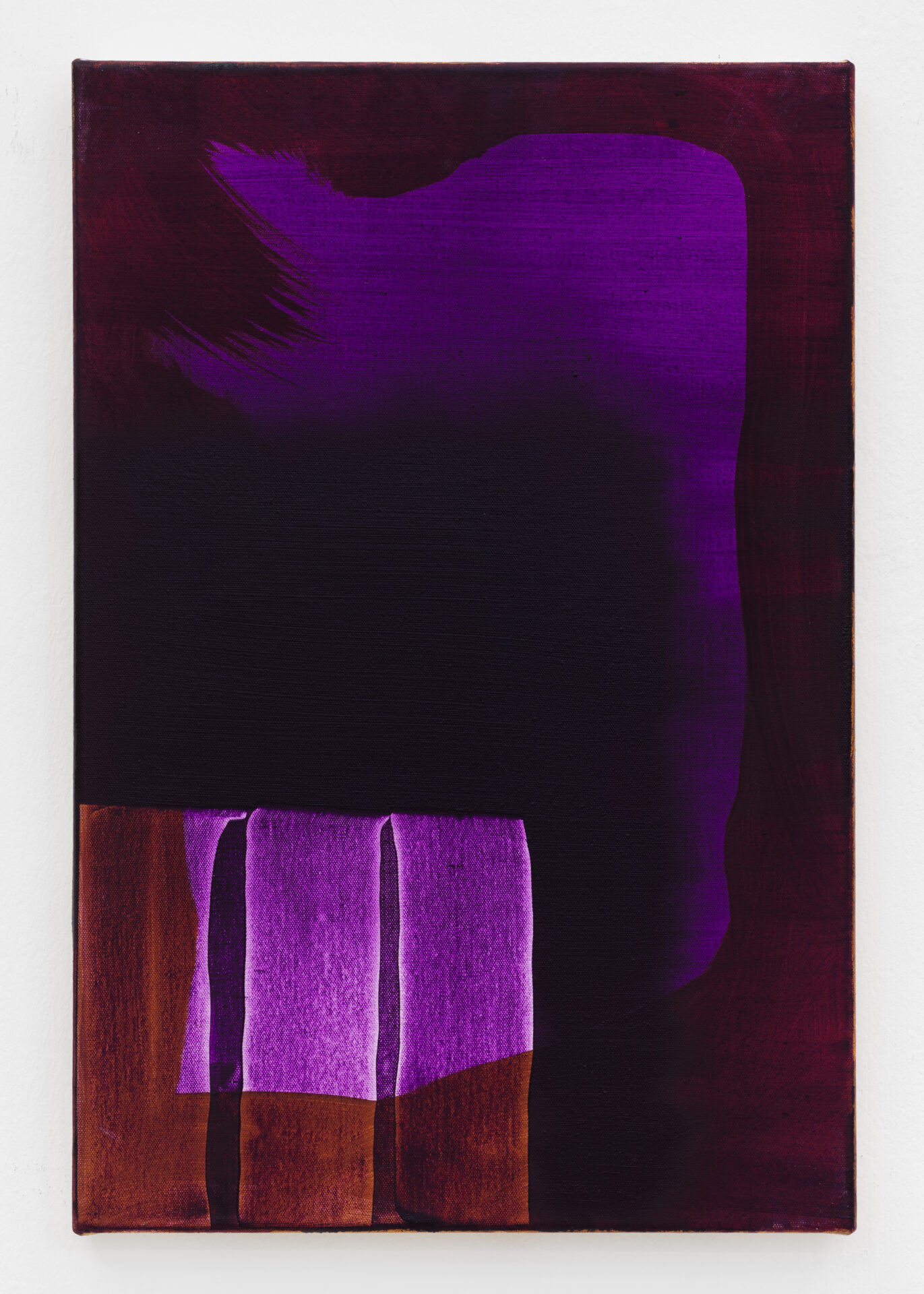
Cobalt violet in oil on sienna on canvas, 60 x 40 cm
